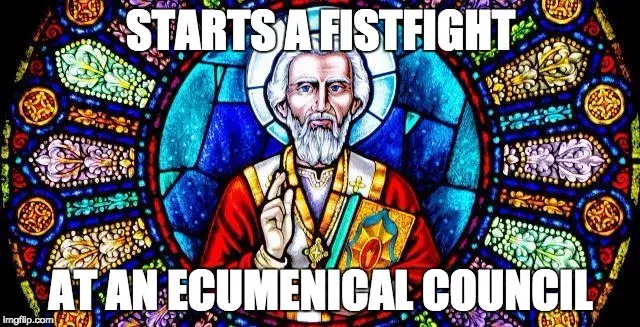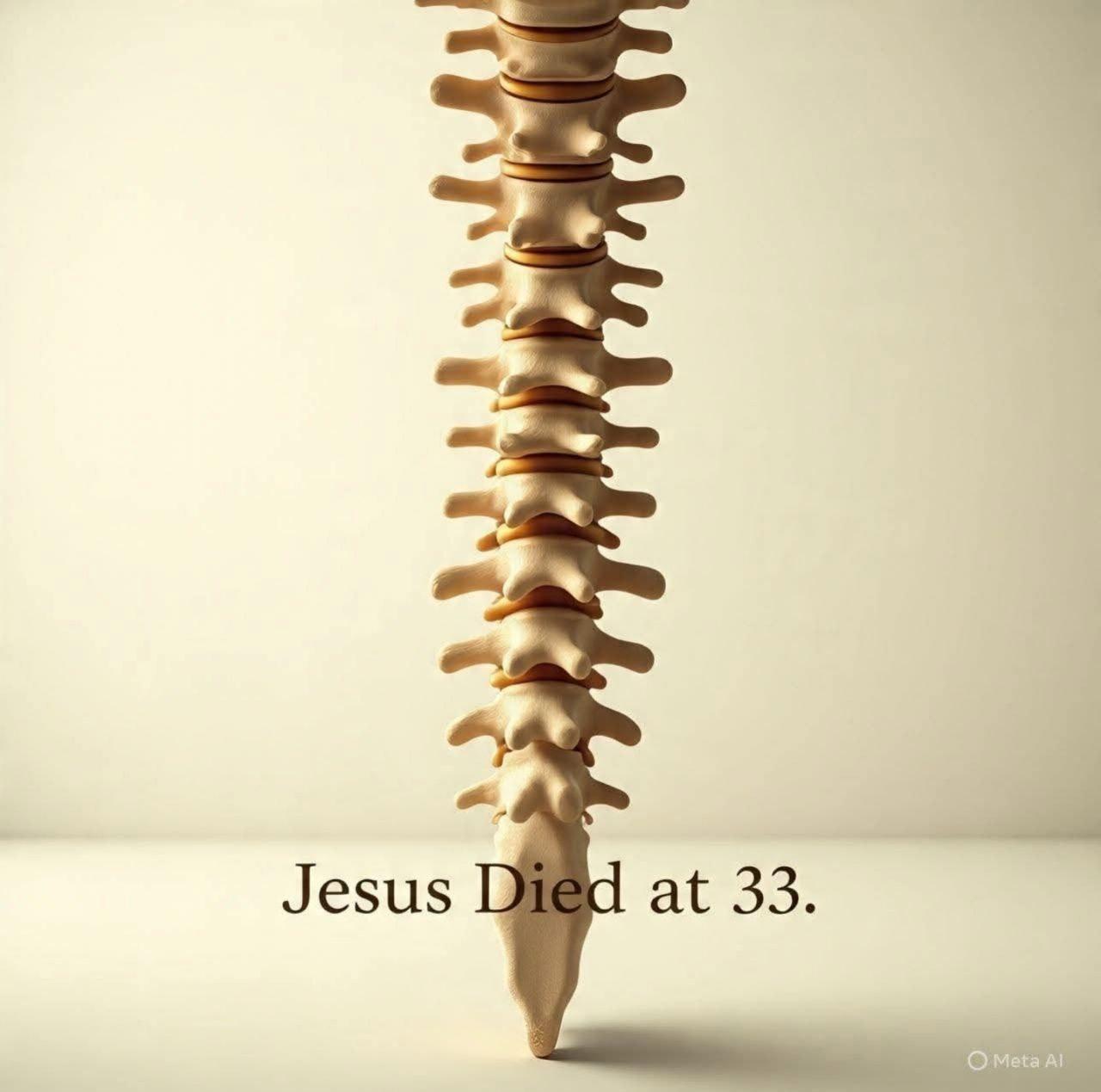Does Christmas have pagan origins?

For most people, the question of the origins of Christmas is probably far from their minds. Some may recognise and give a cursory glance towards the Biblical narrative on the birth of Jesus as something to do with it (although a 2017 study showed that almost 1 in 20 Brits thought Easter was the birth of Jesus!);—but in some Christian circles the question (accusation?) that “Christmas is pagan” is at the forefront of their minds.
Table of Contents
As time goes on and we move further and further into the future, away from the initial events of the first Nativity, the festival of Christmas has morphed into something altogether different than how the first Christians recognised and celebrated it (if they even did).
We know from historical records and study now that a lot of what has been incorporated into the festivities surrounding Christmas does have pagan origins, but does that make the holiday itself still pagan today? Are you inadvertently worshipping “the birthday of the Unconquered Sun” (Dies Natalis Solis Invicti) when you celebrate on the 25th of December?
Let’s trace a little bit of history and see how the early church viewed these festivals, as they were still happening in full force whilst the Church was still young and were a contemporary concern, and what date they pinned the birth of Christ on to.
Much of the earliest references to the Nativity occur in a passing way as a commentary on the event rather than anything celebratory about it. Justin Martyr in his First Apology (~160 AD) mentions that Jesus was born 150 years before him, in the time of Quirinius (or Cyrenius as some translations have it – cf. Luke 2:2), where his readers could “ascertain also from the registers” the accuracy of his statement. Tertullian (197 AD) also references this census as a place where “Mary is described”, in which New Testament scholar W. M. Ramsey saw as proof that Tertullian at least, had access to documents which we no longer do. Origen (~248 AD) even mentions that in his own day, “there is displayed at Bethlehem the cave where Jesus was born”, and that “this sight is greatly talked of in the surrounding places—even among the enemies of the faith” (now known as The Church of the Nativity)!
The first person we see write about a specific date of the birth is Clement of Alexandria around 195 AD in book one of The Stromata, and he speaks about others who have tried to pinpoint the exact day and month of Jesus’ birth, which brings up a variety of dates:
From the birth of Christ, therefore, to the death of Commodus [December 192 AD] are, in all, a hundred and ninety-four years, one month, thirteen days [18th November]. And there are those who have determined not only the year of our Lord's birth, but also the day; and they say that it took place in the twenty-eighth year of Augustus, and in the twenty-fifth day of Pachon [20th May]. And the followers of Basilides hold the day of his baptism as a festival, spending the night before in readings. […] Further, others say that He was born on the twenty-fourth or twenty-fifth of Pharmuthi [19/20th April]. — Clement of Alexandria, 195 AD
So from this quote, we have Clement calculating the birth of Christ to around the 18th of November, 2 BC by our calendar today, and others still who he mentions have worked it out to be around April or May time. He also mentions other people who placed the date of birth on January 6th in 2 or 3 BC, which for any liturgical people reading this, will recognise as another important date in the Christian calendar (we'll come back to this date later).
Keeping and celebrating birthdays was a very Roman thing to do, so it’s no surprise that earlier Christians from a more Jewish heritage didn’t see any importance on marking the exact day and month that Jesus was born, as it was his death and resurrection which held a far greater importance and cause for celebration. Easter was really the first major festival of the Church in its early years over and above anything else that came to be recognised.
The next real reference to Jesus’ birth being on the date we are more familiar with, comes from an important early theologian called Hippolytus of Rome, around the year 220 AD, in his Commentary on Daniel:
For the first advent of our Lord in the flesh, when he was born in Bethlehem, eight days before the kalends of January [December 25th], the 4th day of the week [Wednesday], while Augustus was in his forty-second year, [2 or 3 BC] but from Adam five thousand and five hundred years. He suffered in the thirty third year, 8 days before the kalends of April [March 25th], the Day of Preparation, the fifteenth year of Tiberius Caesar [29 or 30 AD], while Rufus and Roubellion and Gaius Caesar, for the 4th time, and Gaius Cestius Saturninus were Consuls. — Hippolytus, ~220 AD
The text from where this quote is found has an interesting history, as it appears to be from a later text in the tenth century which may point back to an earlier reliable witness, but this date could be an interpolation. Though how or where Hippoylytus got this date from (if he did in fact write this), I am unsure, and it’s quite telling that this is the only fragment from this period to put this date on the Nativity when contemporaries of Hippolytus (such as Tertullian et al.) are strangely quiet about it.
Up until this point in history, if we accept Hippolytus’ excerpt as genuine, there has been no mention of Jesus’ birth on December 25th specifically except for that one time. And even then, the quotes from Early Fathers so far have merely been speculation about the time and date for information’s sake really, with no mention of it being a celebrated event.
When was December 25th celebrated?
December was already a period of festivities in the Roman Empire for a variety of reasons, one such event being Saturnalia. This was a festival in honour of the god Saturn and was held on December 17th originally, but later extended to the 23rd. It involved gift giving and feasting, so you can see where some of those influences still appear today!
Early Christians spoke against the pagan festivals of the day, and usually just lumped them all together in their criticisms, as the end of the year/beginning of the next had a few different events going on, similar in some ways to our own day. Tertullian was most vocal about it all, and had some harsh words for those Christians who did get caught up in all of the parties going on around them! Have a look at the quote below and see what practices sound familiar even now in 2019:
On your day of gladness, we [Christians] neither cover our doorposts with wreaths, nor intrude upon the day with lamps. At the call of public festivity, you consider it a proper thing to decorate your house like some new brothel …. [The Romans] clad their doorposts with green and branching laurels. They smoked up their porches with lofty and brilliant lamps. —Tertullian, ~197 AD
Any of that seem familiar: wreaths, decorations, greenery, lights, feasting and gifts? It would appear our modern Christmas celebrations owe much to second century Roman festivals — with one key difference: we aren’t celebrating these things today as a sacrifice or in honour of Caesar or one of the Roman gods. This is why such festivals (and those who frequented them—Christians included) were spoken against so much by early Christian leaders, as their intent was a completely different focus.
What less of a defamation does he incur on that ground than does a business … that is publicly consecrated to an idol? The Minervalia are as much Minerva’s as the Saturnalia is Saturn’s … likewise, New Year’s gifts must be caught at. The Septimontium must be kept. And all the presents of Midwinter and the Feast of Dear Kinsmanship must be exacted … The same thing takes place on an idol’s birthday. Every ceremony of the devil is frequented. Who will think that these things are befitting to a Christian teacher? —Tertullian, ~200 AD
As you can see from the various festivals listed (which happened throughout the year), all were considered as pagan worship and giving honour to idols and the devil. Tertullian, again, had even stronger words for those Christians who did get involved in the pagan celebrations out of a misguided attempt to avoid unbelievers blaspheming God by their inaction. Yet Tertullian goes on to make the point that Christians have their own calendar with certain days which are recognised (Pascha/Easter and Passover) and that even pagans wouldn’t keep those in case they were mistaken to be Christians too, so why would Christians follow in the pagan traditions dedicated to idols?
We may not join in their feasts, which are celebrated in honour of demons. — Apostolic Constitutions, ~390 AD
The Christian Calendar
So what was this calendar which Tertullian mentioned? Well, it was something fairly well-established before this point in time, as Christians had been celebrating Easter (or Pascha) and Pentecost pretty much since the birth of the Church.
If the apostle has erased all devotion absolutely of “seasons, days, months and years”, why do we celebrate Easter by an annual rotation in the first month? Why in the fifty ensuing days do we spend our time in all exultation? Why do we … [fast on] the Preparation Day [i.e. Good Friday]? — Tertullian, 213 AD
We can see from at least the second century, Christians had fixed times of the year which were kept for certain celebrations around the resurrection, Passover and Pentecost — celebrations which were surely older than the time of Tertullian writing about them as matter-of-factly as he does.
Origen, writing a few decades later around 248 AD, mentions the feast days of the Church that are kept by all believers showing that these customs were fairly central to the worship of the early Christians. I know that some people say we don’t, or shouldn’t, need special days to celebrate Jesus as he is always with us by his Holy Spirit within us etc., and there is truth to that sentiment; Origen would even agree, but he also gives a reason as to why we keep fixed days for specific events:
We ourselves are accustomed to observe certain days. For example, there is the Lord’s Day, the Preparation, Easter and Pentecost … However, the majority of those who are accounted believers are not of this advanced class [i.e., those who focus on Christ every day]. Rather, they require some sensible memorials to prevent spiritual things from passing completely away from their minds. — Origen, ~248 AD
As you can see, the reason for keeping special days of celebration is in fact for the benefit of those Christians who may not focus on Christ so much all the time and need some type of regular reminders and big points in time to recenter themselves in their faith.
It’s really towards the end of the fourth century that we see a more detailed and defined Church Calendar, and one which specifically includes a Christmas date:
Brethren, observe the festival days. First of all, there is the birthday that you are to celebrate on the twenty-fifth of the ninth month [December]. After that, let the Epiphany be to you the most honoured, in which the Lord made to you a display of His own divinity. And let that feast take place on the sixth of the tenth month [January]. After that, the fast of Lent is to be observed by you as containing a memorial of our Lord’s manner of life and teaching. But let this solemnity be observed before the fast of Easter, beginning from the second day of the week and ending at the Day of the Preparation. After those solemnities, breaking your fast, begin the holy week of Easter, all of you fasting in this week with fear and trembling. — Apostolic Constitutions ~390 AD
Much of what is instructed here hasn’t changed at all since the fourth century, which is amazing in itself, I find. There were (and still are) some differences on dates between the Eastern and Western churches, as the Roman Empire obviously had a great deal of influence in the West, especially with the Romans creating the Julian calendar which affected the days and months of the years. In the East, the Church celebrated and developed the Epiphany festival on January 6th which was to commemorate the baptism and birth of Jesus together. Even now, Orthodox and Coptic Churches still follows the Julian dating system for church festivals, and so celebrate Christmas on the (Gregorian) 7th of January as this date would have been the Julian December 25th. It was only in the West where the two events were separated and that Epiphany focused on the visit of the Magi at the birth of Christ instead of his baptism.
John Chrysostom gave a sermon in Antioch on December 20th, 386 AD which gives us a nice insight into how the Christmas date and celebration began to develop more:
For from this feast [that is, the Nativity], the Theophany and the holy Pascha and the Ascension and the Pentecost take their origin and foundation, for if Christ had not been born according to the flesh, he could not have been baptised, which is the Theophany; he could not have been crucified, which is the Pascha; he could not have sent the Spirit, which is the Pentecost.
We see here that the reason for celebrating the Nativity flows logically out of the recognition of the other events of Jesus’ life which were remembered — but still we don’t really see why the twenty-fifth was chosen in the end. Chrysostom’s next sermon, five days later, give us another insight to how this Nativity festival began to spread.
And really, this date of Christ’s birth has been manifest and known to us less than ten years…This, which has been known from of old to the inhabitants of the West and has now been brought to us, not many years ago, is suddenly growing and bringing fruit.
From these quotes, we learn two things specifically: firstly, it appears that the celebration of Christ’s birth as a defined event only really took hold in the East before 386 AD and had only been around there for “less than ten years”. The second thing, is that Chrysostom says that this tradition of celebrating on the 25th of December was a tradition “known from of old” by the Western Church, hinting that the date was known much earlier than some of our written records may say, or that it was a contender for the assumed date when earlier Christians were trying to calculate it. One other theory for the December date is that it occurs nine months after “the Annunciation” (when Gabriel announced to Mary that she would conceive) which is celebrated on the 25th of March, and is a feast day which dates back to the fourth or fifth century too.
Concluding Thoughts
To conclude this study on Christmas, I hope that it has become clear that the timing of the Christmas celebration date is far more complex and involved than the rather simplistic view that early Christians just wanted to replace other pagan festivals, and slapped a new one on top of an older festival!
The idea of even being remotely associated with these ungodly festivals was repugnant to the early church — hence Tertullian’s many strong words against those believers who were swayed by the festivities, and other later texts saying that these other festivals are all in honour of demons. No, these dates and celebrations which arose around the birth of Christ, the visit of the Magi, the Annunciation etc, all came about independently of the Roman celebrations which appear more circumstantial than anything else.
A lot of our other Christmas themes and trappings may be hangovers from a bygone Roman Empire, but the remembrance and celebrations of the incarnation within the Church body were certainly more rooted in a God-honouring and Biblically-minded fashion for worship, than anything else that is often assumed about it.
I hope that you now, armed with this knowledge, will go forth and have a very merry Christmas.
Bonus Information
Saying “Xmas” isn't taking Christ out of Christmas; the Χ is actually the Greek letter Chi which is the first letter of “Christ” in Greek (Χριστός) and so the “Xmas” is simply an ancient shorthand word, nothing nefarious about it! See also: Who was the real Santa Claus?
Fun fact about New Year's Day:
It didn't really exist as a thing until Julius Caesar changed the calendar to add in a new month called "January" in honour of the god Janus. Janus was a god of new beginnings and such like things, with two faces looking into the past and future which is where new year resolutions are thought to come from as a way of asking the god to help or make promises to him. January 1st was the day of honour for the Janus celebration.
The Biblical new year, if you want to call it that, is around April by our modern calendar:
Exodus 12:2 (WEB)
This month (Abib/Nisan) shall be to you the beginning of months. It shall be the first month of the year to you.
Further Reading & Sources
- https://www.eauk.org/culture/statistics/christmas-facts-and-quotes.cfm
- https://www.dec25th.info/Textual%20Tradition%20of%20Hippolytus%20Commentary%20on%20Daniel.html
- https://www.independent.co.uk/news/uk/home-news/christmas-jesus-christ-birthday-25-december-brits-ignorant-nativity-christianity-bethlehem-a8094496.html
- Evans, C. F. “TERTULLIAN'S REFERENCES TO SENTIUS SATURNINUS AND THE LUKAN CENSUS.” The Journal of Theological Studies, vol. 24, no. 1, 1973, pp. 24–39. JSTOR, www.jstor.org/stable/23959449.
- Justin Martyr: https://patristics.info/justin-martyr-first-apology.html#Chapter_XXXIV_Place_of_Christs_birth_foretold (ch. 34 & 46)
- Tertullian: http://www.newadvent.org/fathers/0308.htm (ch. 9)
- Clement of Alexandria: http://www.newadvent.org/fathers/02101.htm (ch. 21)
- http://www.csun.edu/~hcfll004/jesuvita.html
- On Christmas: http://www.newadvent.org/cathen/03724b.htm
- https://www.ccel.org/ccel/hippolytus
- https://www.bbc.co.uk/religion/religions/christianity/holydays/epiphany.shtml
- https://www.whychristmas.com/customs/25th.shtml
- Annunciation: http://www.newadvent.org/cathen/01541c.htm
- https://www.franciscanmedia.org/annunciation-of-the-lord/
- https://www.theopedia.com/incarnation-of-the-son-of-god
- https://www.livescience.com/20987-jesus-birthplace-church-nativity.html
- https://reformedforum.org/the-origin-of-the-church-calendar/
Leave a comment Like Back to Top Seen 3.3K times Liked 0 times
Enjoying this content?
Support my work by becoming a patron on Patreon!
By joining, you help fund the time, research, and effort that goes into creating this content — and you’ll also get access to exclusive perks and updates.
Even a small amount per month makes a real difference. Thank you for your support!
Subscribe to Updates
If you enjoyed this, why not subscribe to free email updates and join over 864 subscribers today!
My new book is out now! Order today wherever you get books
Recent Posts
Luke J. Wilson | 19th August 2025 | Fact-Checking
A poetic post has been circulating widely on Facebook, suggesting that our anatomy mirrors various aspects of Scripture. On the surface it sounds inspiring, but when we take time to weigh its claims, two main problems emerge. The viral post circulating on Facebook [Source] First, some of its imagery unintentionally undermines the pre-existence of Christ, as if Jesus only “held the earth together” for the 33 years of His earthly life. Second, it risks reducing the resurrection to something like biological regeneration, as if Jesus simply restarted after three days, instead of being raised in the miraculous power of God. Alongside these theological dangers, many of the scientific claims are overstated or symbolic rather than factual. Let’s go through them one by one. 1. “Jesus died at 33. The human spine has 33 vertebrae. The same structure that holds us up is the same number of years He held this Earth.” The human spine does generally have 33 vertebrae, but that number includes fused bones (the sacrum and coccyx), and not everyone has the same count. Some people have 32 or 34. More importantly, the Bible never says Jesus was exactly 33 when He died — Luke tells us He began His ministry at “about thirty” (Luke 3:23), and we know His public ministry lasted a few years, but His precise age at death is a tradition, not a biblical statement. See my other recent article examining the age of Jesus here. Theologically, the phrase “the same number of years He held this Earth” is problematic. Jesus did not hold the world together only for 33 years. The eternal Word was with God in the beginning (John 1:1–3), and “in Him all things hold together” (Colossians 1:17). Hebrews says He “sustains all things by His powerful word” (Hebrews 1:3). He has always upheld creation, before His incarnation, during His earthly ministry, and after His resurrection. To imply otherwise is to risk undermining the pre-existence of Christ. 2. “We have 12 ribs on each side. 12 disciples. 12 tribes of Israel. God built His design into our bones.” Most people do have 12 pairs of ribs, though some are born with an extra rib, or fewer. The number 12 is certainly biblical: the 12 tribes of Israel (Genesis 49), the 12 apostles (Matthew 10:1–4), and the 12 gates and foundations of the New Jerusalem (Revelation 21). But there’s no biblical connection between rib count and these symbolic twelves. This is a case of poetic association, not design woven into our bones. The only real mention of ribs in Scripture is when Eve is created from one of Adam’s ribs in Genesis 2:21–22, which has often led to the teaching in some churches that men have one less rib than women (contradicting this new claim)! 3. “The vagus nerve runs from your brain to your heart and gut. It calms storms inside the body. It looks just like a cross.” The vagus nerve is real and remarkable. It regulates heart rate, digestion, and helps calm stress, and doctors are even using vagus nerve stimulation as therapy for epilepsy, depression, and inflammation showing it really does “calm storms” in the body. But it does not look like a cross anatomically. The language about “calming storms” may echo the way Jesus calmed the storm on the Sea of Galilee (Mark 4:39), but here again the poetic flourish stretches science (and Scripture) beyond what’s accurate. 4. “Jesus rose on the third day. Science tells us that when you fast for 3 days, your body starts regenerating. Old cells die. New ones are born. Healing begins. Your body literally resurrects itself.” There’s a serious theological problem here. To equate Jesus’ resurrection with a biological “regeneration” after fasting is to misrepresent what actually happened. Fasting can indeed trigger cell renewal and immune repair, but it cannot bring the dead back to life. It’s still a natural process that happens...
Luke J. Wilson | 08th July 2025 | Islam
“We all worship the same God”. Table of Contents 1) Where YHWH and Allah Appear Similar 2) Where Allah’s Character Contradicts YHWH’s Goodness 3) Where Their Revelations Directly Contradict Each Other 4) YHWH’s Love for the Nations vs. Allah’s Commands to Subjugate 5) Can God Be Seen? What the Bible and Qur’an Say 6) Salvation by Grace vs. Salvation by Works Conclusion: Same God? Or Different Revelations? You’ve heard it from politicians, celebrities, and even some pastors. It’s become something of a modern mantra, trying to shoehorn acceptance of other beliefs and blend all religions into one, especially the Abrahamic ones. But what if the Bible and Qur’an tell different stories? Let’s see what their own words reveal so you can judge for yourself. This Tweet recently caused a stir on social media 1) Where YHWH and Allah Appear Similar Many point out that Jews, Christians, and Muslims share a belief in one eternal Creator God. That’s true — up to a point. Both the Bible and Qur’an describe God as powerful, all-knowing, merciful, and more. Here’s a list comparing some of the common shared attributes between YHWH and Allah, with direct citations from both Scriptures: 26 Shared Attributes of YHWH and Allah According to the Bible (NRSV) and the Qur’an Eternal YHWH: “From everlasting to everlasting you are God.” — Psalm 90:2 Allah: “He is the First and the Last…” — Surah 57:3 Creator YHWH: “In the beginning God created the heavens and the earth.” — Genesis 1:1 Allah: “The Originator of the heavens and the earth…” — Surah 2:117 Omnipotent (All-Powerful) YHWH: “Nothing is too hard for you.” — Jeremiah 32:17 Allah: “Allah is over all things competent.” — Surah 2:20 Omniscient (All-Knowing) YHWH: “Even before a word is on my tongue, O LORD, you know it.” — Psalm 139:4 Allah: “He knows what is on the land and in the sea…” — Surah 6:59 Omnipresent (Present Everywhere) YHWH: “Where can I go from your Spirit?” — Psalm 139:7–10 Allah: “He is with you wherever you are.” — Surah 57:4 Holy YHWH: “Holy, holy, holy is the LORD of hosts.” — Isaiah 6:3 Allah: “The Holy One (Al-Quddus).” — Surah 59:23 Just YHWH: “A God of faithfulness and without injustice.” — Deuteronomy 32:4 Allah: “Is not Allah the most just of judges?” — Surah 95:8 Merciful YHWH: “The LORD, merciful and gracious…” — Exodus 34:6 Allah: “The Most Gracious, the Most Merciful.” — Surah 1:1 Compassionate YHWH: “As a father has compassion on his children…” — Psalm 103:13 Allah: “He is the Forgiving, the Affectionate.” — Surah 85:14 Faithful YHWH: “Great is your faithfulness.” — Lamentations 3:22–23 Allah: “Indeed, the promise of Allah is truth.” — Surah 30:60 Unchanging YHWH: “For I the LORD do not change.” — Malachi 3:6 Allah: “None can change His words.” — Surah 6:115 Sovereign YHWH: “The LORD has established his throne in the heavens…” — Psalm 103:19 Allah: “Blessed is He in whose hand is dominion…” — Surah 67:1 Loving YHWH: “God is love.” — 1 John 4:8 Allah: “Indeed, my Lord is Merciful and Affectionate (Al-Wadud).” — Surah 11:90 Forgiving YHWH: “I will not remember your sins.” — Isaiah 43:25 Allah: “Allah forgives all sins…” — Surah 39:53 Wrathful toward evil YHWH: “The LORD is a jealous and avenging God…” — Nahum 1:2 Allah: “For them is a severe punishment.” — Surah 3:4 One/Unique YHWH: “The LORD is one.” — Deuteronomy 6:4 Allah: “Say: He is Allah, One.” — Surah 112:1 Jealous of worship YHWH: “I the LORD your God am a jealous God.” �...
Luke J. Wilson | 05th June 2025 | Blogging
As we commemorated the 500th anniversary of the Protestant Reformation this year, the familiar image of Martin Luther striding up to the church door in Wittenberg — hammer in hand and fire in his eyes — has once again taken centre stage. It’s a compelling picture, etched into the imagination of many. But as is often the case with historical legends, closer scrutiny tells a far more nuanced and thought-provoking story. The Myth of the Door: Was the Hammer Ever Raised? Cambridge Reformation scholar Richard Rex is one among several historians who have challenged the romanticised narrative. “Strangely,” he observes, “there’s almost no solid evidence that Luther actually went and nailed them to the church door that day, and ample reasons to doubt that he did.” Indeed, the first image of Luther hammering up his 95 Theses doesn’t appear until 1697 — over 180 years after the fact. Eric Metaxas, in his recent biography of Luther, echoes Rex’s scepticism. The earliest confirmed action we can confidently attribute to Luther on 31 October 1517 is not an act of public defiance, but the posting of two private letters to bishops. The famous hammer-blow may never have sounded at all. Conflicting Accounts Philip Melanchthon, Luther’s successor and first biographer, adds another layer of complexity. He claimed Luther “publicly affixed” the Theses to the door of All Saints’ Church, but Melanchthon wasn’t even in Wittenberg at the time. Moreover, Luther himself never mentioned posting the Theses publicly, even when recalling the events years later. Instead, he consistently spoke of writing to the bishops, hoping the matter could be addressed internally. At the time, it was common practice for a university disputation to be announced by posting theses on church doors using printed placards. But no Wittenberg-printed copies of the 95 Theses survive. And while university statutes did require notices to be posted on all church doors in the city, Melanchthon refers only to the Castle Church. It’s plausible Luther may have posted the Theses later, perhaps in mid-November — but even that remains uncertain. What we do know is that the Theses were quickly circulated among Wittenberg’s academic elite and, from there, spread throughout the Holy Roman Empire at a remarkable pace. The Real Spark: Ink, Not Iron If there was a true catalyst for the Reformation, it wasn’t a hammer but a printing press. Luther’s Latin theses were swiftly reproduced as pamphlets in Basel, Leipzig, and Nuremberg. Hundreds of copies were printed before the year’s end, and a German translation soon followed, though it may never have been formally published. Within two weeks, Luther’s arguments were being discussed across Germany. The machinery of mass communication — still in its relative infancy — played a pivotal role in what became a theological, political, and social upheaval. The Letters of a Conscientious Pastor Far from the bold revolutionary of popular imagination, Luther appears in 1517 as a pastor deeply troubled by the abuse of indulgences, writing with respectful concern to those in authority. In his letter to Archbishop Albrecht of Mainz, he humbly addresses the archbishop as “Most Illustrious Prince,” and refers to himself as “the dregs of humanity.” “I, the dregs of humanity, have so much boldness that I have dared to think of a letter to the height of your Sublimity,” he writes — hardly the voice of a man trying to pick a fight. From Whisper to Roar Luther’s initial appeal through formal channels was, predictably, ignored. He was advised not to make trouble. But as opposition mounted and corruption remained unchecked, the once quiet reformer grew louder. His theological convictions deepened, and his public persona evolved. The lion did eventually roar — but not on October 31. A Catholic Reformer, Not a Protestant Founder It’s vital to remem...
Luke J. Wilson | 20th May 2025 | Islam
You are not alone. Around the world, many Muslims — people who already believe in one God, pray, and seek to live righteously — are drawn to know more about Jesus (ʿĪsā in Arabic). Some have heard He is more than a prophet. Some have sensed His presence in a dream or vision. And some simply long to know God more deeply, personally, and truly. So what does it mean to become a Christian? And how can you take that step? This guide is for you. 1. What Christians Believe About God and Jesus ➤ One God, Eternal and Good Christians believe in one God — the same Creator known to Abraham, Moses, and the prophets. But we also believe God is more personal and relational than many realise. In His love, He has revealed Himself as Father, Son (Jesus), and Holy Spirit — not three gods, but one God in three persons. ➤ Jesus Is More Than a Prophet Muslims honour Jesus as a great prophet, born of the virgin Mary. Christians also affirm this — but go further. The Bible teaches that Jesus is the Word of God (Kalimat Allāh), who became flesh to live among us. He performed miracles, healed the sick, raised the dead — and lived without sin.Jesus came not just to teach but to save — to bring us back to God by bearing our sins and rising again in victory over death. 2. Why Do We Need Saving? ➤ The Problem: Sin All people — no matter their religion — struggle with sin. We lie, get angry, feel jealous, act selfishly, or fail to love God fully. The Bible says: “All have sinned and fall short of the glory of God.” (Romans 3:23) Sin separates us from God. And no matter how many good deeds we do, we can never make ourselves perfect or holy before Him. ➤ The Solution: Jesus Because God loves us, He did not leave us in our sin. He sent Jesus, His eternal Word, to live as one of us. Jesus died willingly, offering His life as a sacrifice for our sins, then rose again on the third day. “But God proves his love for us in that while we still were sinners Christ died for us.” (Romans 5:8) 3. How Do I Become a Christian? Becoming a Christian is not about joining a Western religion. It’s about entering a relationship with God through faith in Jesus Christ. Here is what the Bible says: ✝️ 1. Believe in Jesus Believe that Jesus is the Son of God, that He died for your sins, and that He rose again. “If you confess with your lips that Jesus is Lord and believe in your heart that God raised him from the dead, you will be saved.” (Romans 10:9) 💔 2. Repent of Your Sins Turn away from sin and ask God to forgive you. This is called repentance. It means being truly sorry and choosing a new way. “Repent therefore, and turn to God so that your sins may be wiped out.” (Acts 3:19) 💧 3. Be Baptised Jesus commands His followers to be baptised in water as a sign of their new life. Baptism represents washing away your old life and rising into a new one with Jesus. “Repent and be baptised every one of you in the name of Jesus Christ so that your sins may be forgiven.” (Acts 2:38) 🕊️ 4. Receive the Holy Spirit When you believe in Jesus, God gives you the Holy Spirit to live within you, guiding you, comforting you, and helping you follow His will. “You received the Spirit of adoption, by whom we cry, ‘Abba! Father!’” (Romans 8:15) 🧎 5. Begin a New Life As a Christian, you are born again — spiritually renewed. You begin to grow in faith, love, and holiness. You read the Bible, pray, fast, and gather with other believers. Your life is no longer your own; you now live for God. 4. What Does a Christian Life Look Like? Jesus said: “If anyone wants to become my followers, let them deny themselves and take up their cross and follow me.” (Matthew 16:24) This means: Loving God with all your heart Loving your neighbour — even your enemies Forgiving others ...









